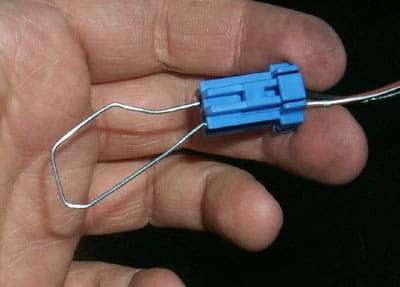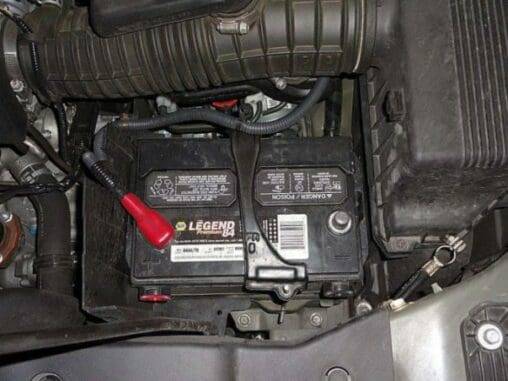
So, it’s the weekend, you’re out enjoying the open road. And, WHAM, your OBD1 “Check Engine” light rears its ugly head.
Now, you are wondering, what is wrong with the engine? So, all you need now is some OBD1 trouble code information, to steer you in the right direction.
Consequently, here’s how you can learn what you’re, OBD1 Electronic Control Unit (ECU) is trying to tell you. Firstly, the (ECU) loves to talk in code. But, the only problem now, is trying to decipher it.
So, with the right, OBD1 – trouble code information, you can be well on your way, to solving the problem.
Condition-1
So, a steady light on means, the problem is not very serious. As a result, continue driving with caution, if you don’t notice any performance issues. And, the car doesn’t overheat, and the oil light is off.
Condition-2
So, a flashing or blinking Honda check engine light means, there is a serious engine misfire. As a result, the car will shake and you will notice, poor throttle response. Above all, you should not drive your Honda, if the check engine light is flashing. Because, driving a car with a misfire, will damage your catalytic converter and cause the engine to overheat.
Learn About Some Honda OBD1 Codes And Help To Interpret Them:
- So, the ’86-’91 Honda and ’86-’93 Acura were equipped with a little window, on the (ECU) that had a (LED).
- This little (LED) would flash the code, when the key was in the ON position. But unfortunately, the ’92-’00 Honda and ’94-’00 (ECU) were upgraded, without an access window or (LED).
As a result, The (LED) Has Been Replaced With A, “Flashing Check Engine Light”.

Consequently, making it way easier, to pull the OBD1 trouble codes. Firstly, locate the factory diagnostic plug, next to the (ECU) for the Integra and Civic. So, you will find this plug in the passenger side floor board. And, underneath the far right hand side of the glove box.

So, there is a two-pin connector that contains, a brown and black wire.

Firstly, jump these two wires together with a paperclip. Then, turn your key to the ON position. So, you have done the easy work. But, now is the tricky part. Learning to read, the OBD1 Trouble Code Information.
Deciphering The Code, Requires, Reading The Light Sequences.
So, when the key is in the ON position, the check engine light, emits two different flashes:
- Firstly, a long extended flash means 10, and a rapid flash means 1.
- One long flash, another long flash, followed by 3 quick flash stands for 23!
Now that you are equipped with this information, here are the codes for the ’92-’00 Honda and ’94-’00 Acura.
Basic, OBD1 Trouble Codes:
- 1 Heated oxygen sensor A (HO2S)
- 2 Oxygen content B
- 3 and 5 Manifold Absolute Pressure (MAP)
- 4 Crank position sensor (CKP)
- 5 (MAP) Sensor
- 6 Engine coolant temperature (ECT)
- 7 Throttle position sensor (TPS)
- 8 Top dead center sensor (TDC)
- 9 No.1 cylinder position sensor
- 10 Intake air temperature sensor (IATS)
- 12 Exhaust gas recirculation system (EGR)
- 13 Barometric pressure sensor (BMAP)
- 14 Idle air control valve or bad (ECM)
- 15 Ignition output signal
- 16 Fuel Injector
- 17 Vehicle speed sensor (VSS)
- 19 A/T lock-up control solenoid
- 20 Electric load detector
- 21 V-TEC control solenoid
- 22 V-TEC pressure solenoid
- 23 Knock sensor (KS)
- 30 (TCM) Signal A
- 31 (TCM) Signal B
- 41 Heated oxygen sensor heater
- 43 Fuel supply system
- 45 Fuel supply metering
- 48 Heated oxygen sensor (HO2S)
- 54 Crankshaft Speed Fluctuation Sensor
- 61 Primary Front heated oxygen sensor
- 63 Secondary Rear heated oxygen sensor
- 65 Rear heated oxygen sensor heater
- 67 Catalytic converter system
- 70 Automatic transaxle
- 71 Misfire detected cylinder 1
- 72 Misfire detected cylinder 2
- 73 Misfire detected cylinder 3
- 74 Misfire detected cylinder 4
- 75 Misfire detected cylinder 5
- 76 Misfire detected cylinder 6
- 80 Exhaust gas recirculation system (EGR)
- 86 Coolant temperature sensor (CTS)
- 90 Evaporative Emission Control System Leak Detected (EVAP)
- 91 Fuel Tank Pressure Circuit
- 92 Evaporative emission control system (EVAP)
Note: Code 0 and 11 Electronic Control Module (ECM)
Now That You Have Read The Codes, You Have To Clear Them:
- Disconnect the negative battery cable, for at least 10 seconds to clear codes.

Conclusion
So, OBD1 gave cars a system that, detected problems and then reported them, as trouble codes. Furthermore, these early systems were made of proprietary connectors, protocols, and hardware interfaces.
As a result, we cannot guarantee the accuracy of all trouble codes. So, we do try and make them as accurate as we can, but we all make mistakes. Therefore, you should always check for manufacturer specific codes, with an appropriate manual.
BY DANNY BENDER




